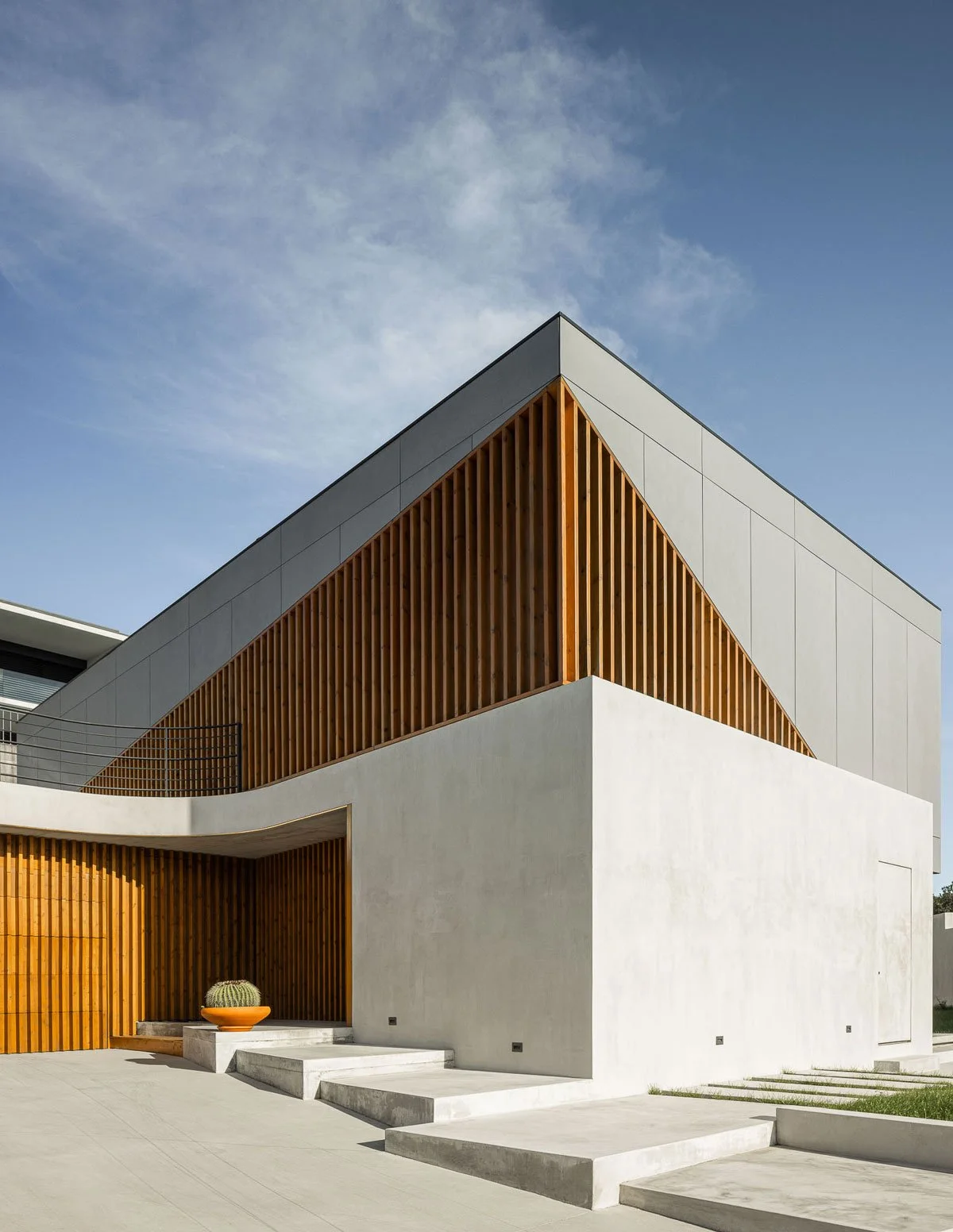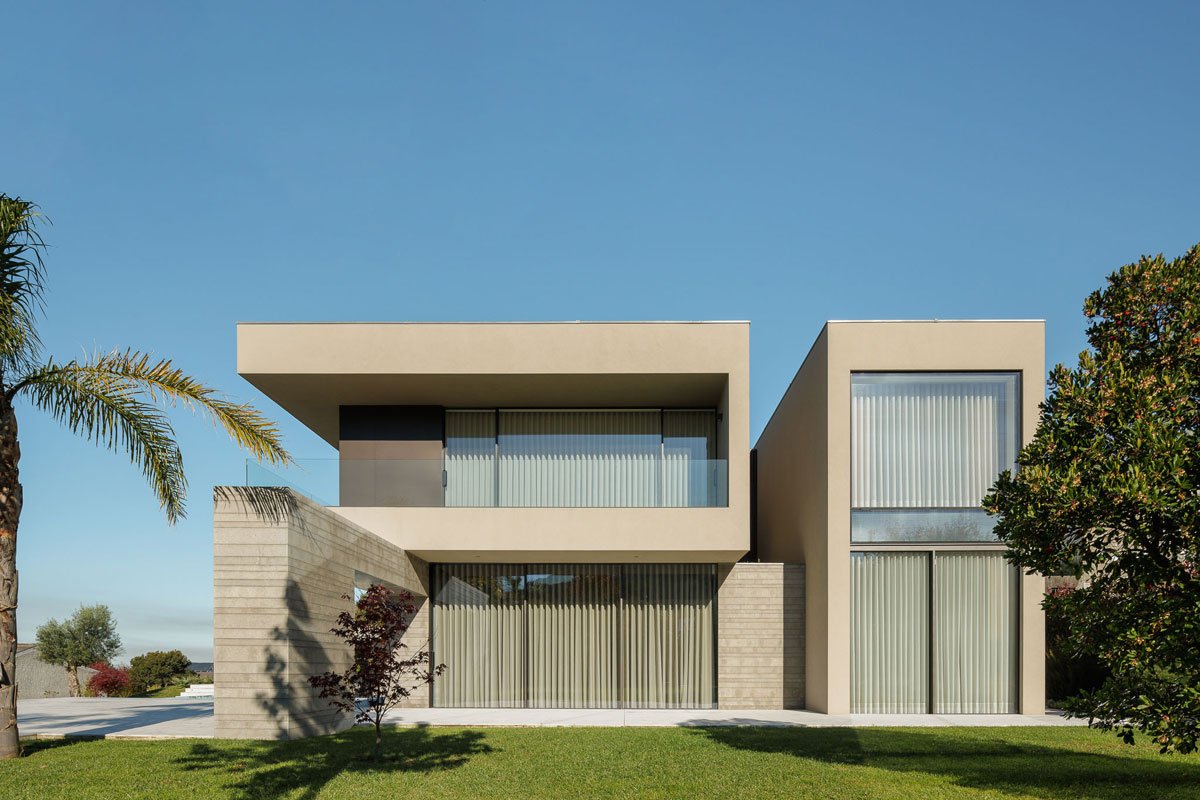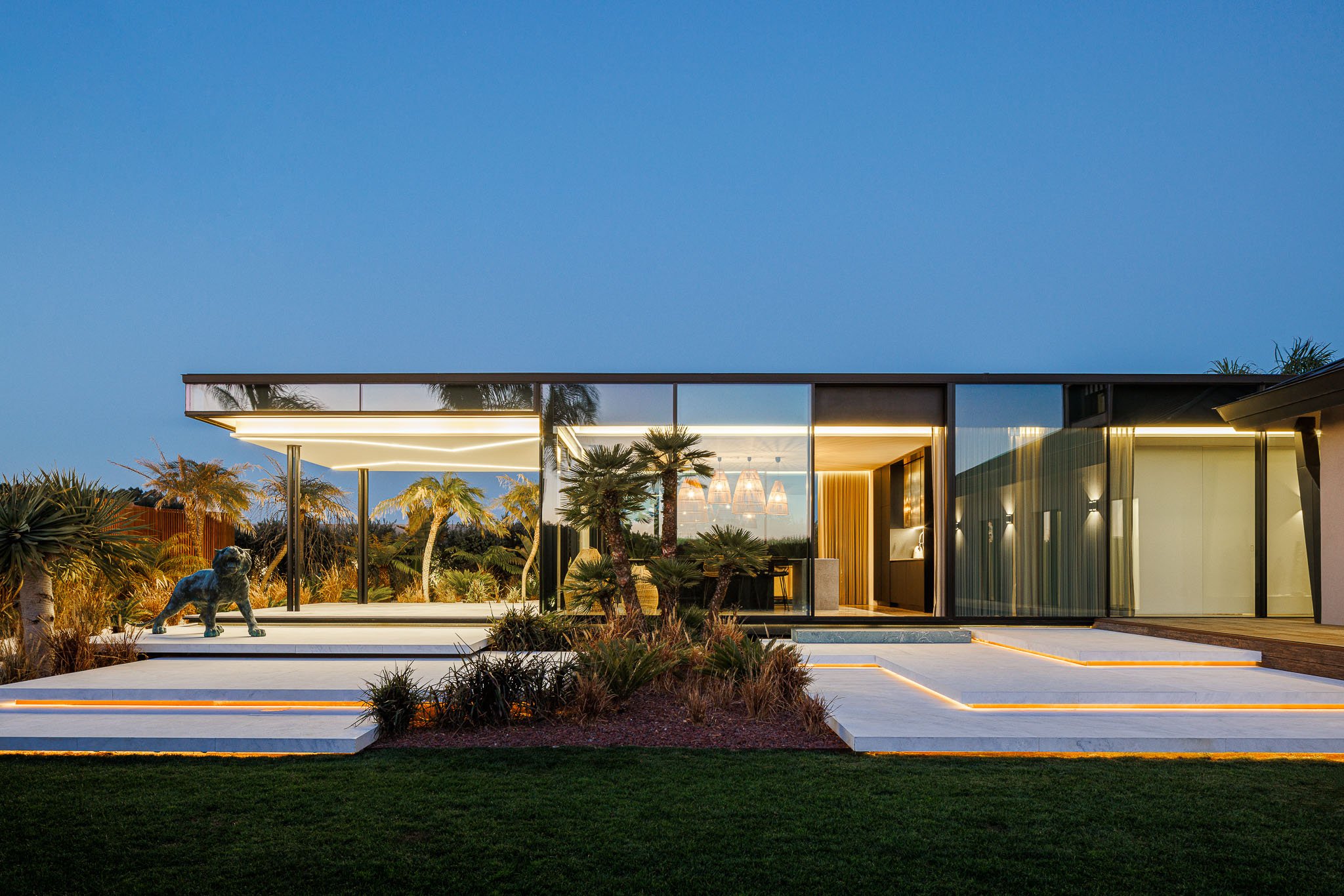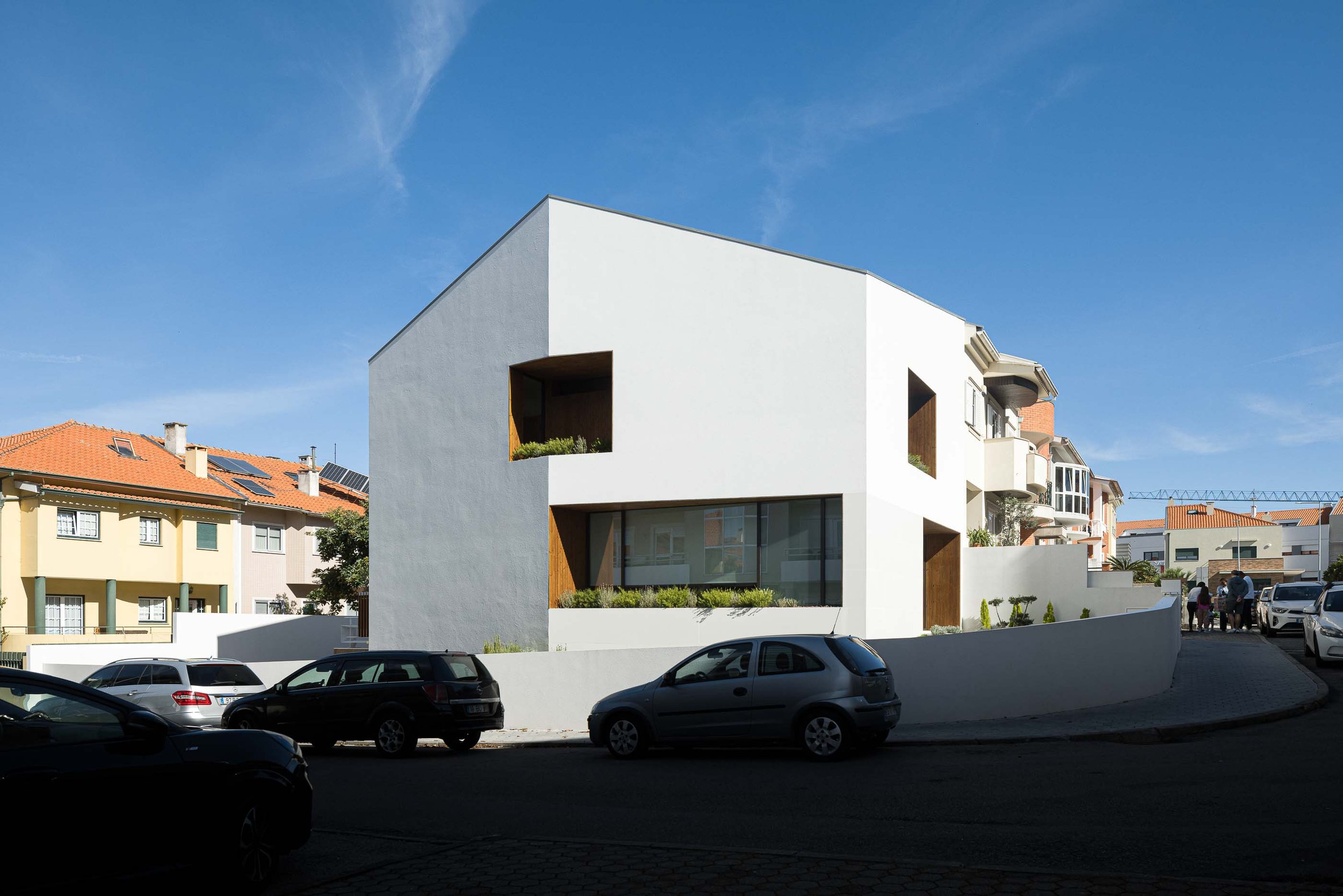CASA 15 || This Residence in Portugal Uses the Flow of Natural Light in the Space to Indicate the Day's Cycle
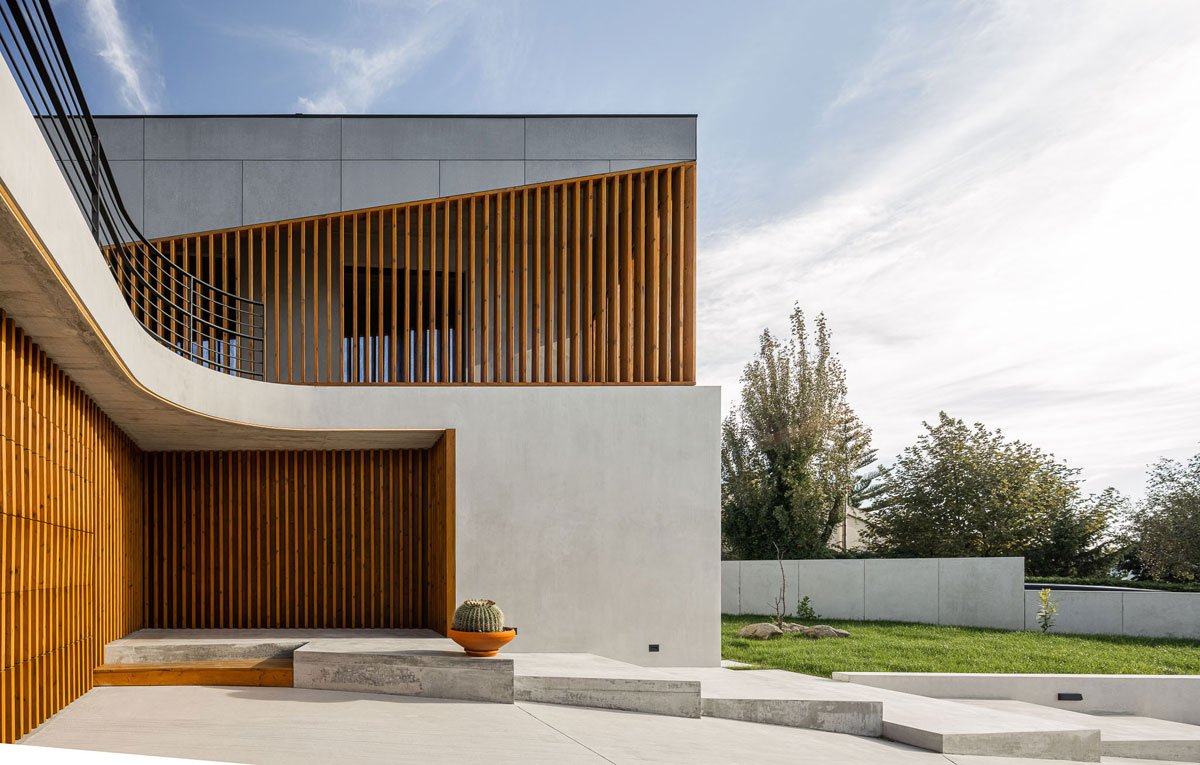
The homeowners had a clear vision of how they wanted their residence to be compartmentalized to segment the social and private spaces.
For them, everyone should be visible and part of the family, regardless of whether they are cooking, reading or working from home. On the other hand, they wanted to be comfortable at night without feeling uneased by shadows and exterior movements. As a result, the normal division between social and private spaces is made more distinct than usual.
The living area is open and spacious to invite natural light in ad let it travel through the connected social spaces of the home.
The floating staircase incorporates suspended storage nooks to display items.
This was the narrative that started building the design process to connect all the interior spaces. The exterior of the home provides a higher level of privacy given the volumes do not let guests see inside. Although the facade may feel solid and impenetrable, beyond the main entrance and corridor, the first rays of natural light invite guests to the living room. The next steps reveal a high ceiling, which connects the upper floor through suspended stairs using the same wood as seen in the exterior of the house, and all the social and working atmospheres, including the exterior garden.
Wooden elements act as a connecting material to align the design throughout the home.
A storage wall with open and closed cabinets is highlighted as a feature wall with ambient lighting.
People’s fluidity through spaces, both horizontally and vertically, is connected by virtue of this core space, where the ceiling wood turns and becomes the floor finish of the level above. This game between continuity and transition allows the natural light to disperse into the horizontal planes, both floor and ceiling, converging into a gradient between social and leisure spaces and rest spaces.
From very early stages, light reflection over wood surfaces, in contrast with gray and darker materials, was believed to be the best way to mark the passage of time. What starts as the first moment of the day - breakfast - is the time when natural light touches the kitchen floor and the wood balcony. The second moment reflects the light pointing to the dining space, where both interior and exterior can be connected in this extended semi-exterior space. Here, both the ceiling and the floor materials work to disguise boundaries during warmer days. After that, the sun starts getting lower until it touches the library’s wood furniture, giving it a warm and comfortable feeling, and inviting the transition from the home office to the living room. As this area is the last to receive the natural light, it signals the completion of the day’s cycle.
Intentional slivers of light let in from the exterior facade also acts as a way to tell time and the evolution of natural light throughout the day.
During the day we can see the natural light reflecting and guiding the inhabitants to the more comfortable areas of the house, while during the night the artificial light is placed in strategic places to extend a feeling of warmth. The confidence and security are achieved with light reflecting on the wood, which makes the entire first level a light box that invites exploration.
The corridor provides both a reading nook to gaze outside and opens out onto the patio and winter garden.
As the family starts the transition from social to private spaces, the main goal was to a smooth, continuous space, similar to how the first floor has light flowing continuously throughout the day, so that inhabitants have a quieter place to rest. To achieve that, the corridor’s walls and doors have a dark concrete finish that is only interrupted by a window that lets light enter. The rooms on the west facade are warmer, as they receive the last hours of sun, intensified by the wood’s warm feeling. There is a continuity of the floor expanding into a balcony protected by thin wood columns filtering the view from outside while letting the users see outside.
The master bedroom has a direct connection to the vertical winter garden.
The master bedroom has a direct connection with the vertical winter garden, which reflects the light from the level below onto the bedroom level and vice-versa. A bigger window is placed in the corner of the bedroom, creating a particularly interesting moment when the natural rays almost become parallel to the ceiling and floor, shifting the wall from gray to almost white.
This game between darker surfaces and smaller openings makes the upper-level spaces quieter and more secure, without creating the sense of a small space. Even during relaxation moments, inhabitants can connect with the exterior as they wish, either walking outside to enjoy the warm wood on the private balcony or letting the moonlight spill over the bed sheets through the vertical opening.
Wooden slats allow in light during the daytime and create an interplay of light and shadow.
PROJECT DETAILS
Project name: Casa 15
Architecture Office: AM-arqstudio | Instagram
Main Architect: André Malheiro
Location: Braga - Portugal
Completion: 2021
Total area: 350m²
Constructor: RespirarArte
Engineering: Eduarda Oliveira
Interiors Team: AM-arqstudio
Photographer: Ivo Tavares Studio

